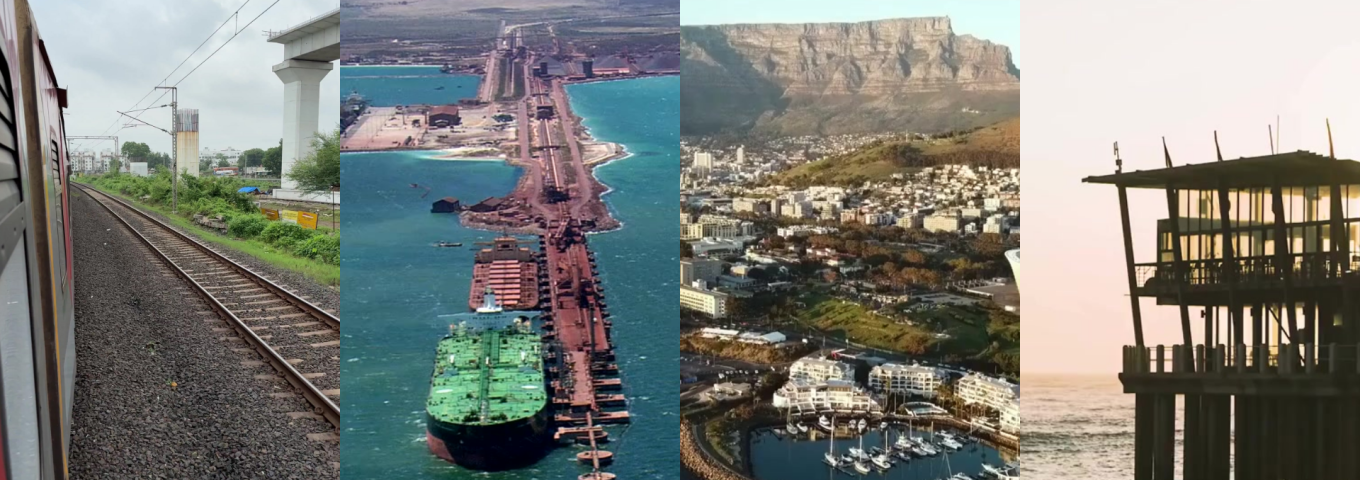Transport Engineering: Celebrating Rail, Harbour, and Marine Infrastructure
Transport engineering is a critical component of infrastructure development, underpinning the nation’s ability to connect people, goods, and services across vast distances. As a country continues to evolve, the importance of robust, sustainable, and innovative transport solutions becomes increasingly apparent. The interconnected nature of rail, harbour, coastal, and marine engineering highlights the need for integrated approaches that address both current and future challenges. Effective transport engineering solutions are vital for economic growth and regional connectivity.
Introduction
Transport engineering directly impacts the daily lives of people in numerous ways. For instance, an efficient railway network can provide commuters with reliable and affordable transportation to work, reducing travel time and easing road congestion.
Similarly, well-designed harbour systems ensure that imported goods, such as groceries and household items, are delivered seamlessly throughout the supply chain, keeping store shelves stocked and prices competitive. Coastal and marine engineering also plays a role in protecting communities from flooding and erosion, as well as safeguarding homes and infrastructure in vulnerable areas. These scenarios highlight how transport engineering supports both individual well-being and broader societal needs.
The Evolution of Railway Engineering
Many railway sectors globally face significant challenges, such as ageing infrastructure and capacity limitations. These issues can hinder the efficiency and reliability of rail transport, impacting both passenger and freight movement.
However, the sector is also witnessing the adoption of emerging technologies and methodologies that promise to revitalise railroad systems. Approaches to railway engineering increasingly emphasise technical expertise in design and rehabilitation with a strong focus on integrating sustainability principles. Consideration of unique geographical challenges is essential in developing rail networks that are both resilient and efficient. Looking ahead, the future of railway engineering in the country is shaped by ongoing innovation and a commitment to overcoming existing obstacles.
Harbour Engineering: Gateways to Global Trade
Efficient harbour infrastructure is crucial for many economies; it serves as the primary interface for international trade. Modern harbour engineering involves the design and maintenance of key components, such as berths, breakwaters, and terminals. Technical challenges in harbour development include ensuring operational efficiency, structural integrity, and environmental responsibility.
Integrated design approaches are essential, taking into account the need for seamless operations and long-term sustainability. Structural assessments and improvement recommendations help maintain the functionality and safety of harbour facilities. Environmentally responsible development practices are increasingly prioritised, recognising the importance of balancing economic growth with ecological preservation. Efficient ports play a significant role in stimulating economic growth and creating employment opportunities.
Coastal and Marine Engineering Solutions
Coastal and marine engineering is characterised by unique challenges, including climate change, erosion, rising sea levels, and extreme weather events. Addressing these issues requires a combination of technical expertise and environmental awareness.
Analytical capabilities are essential for understanding coastal processes and conducting thorough environmental impact assessments. Innovative approaches to shore protection and coastal structure design are necessary to safeguard communities and infrastructure. Interdisciplinary collaboration with environmental specialists ensures that solutions are both effective and sustainable.
Integrated Transport Engineering: A Holistic Approach
Integrated transport engineering brings together different disciplines to create infrastructure that works seamlessly and supports economic growth. For instance, a unified system can ensure that raw materials from mines are efficiently transported to factories, boosting production and creating jobs. Multidisciplinary teams collaborate to design solutions that are not only practical but also adaptable to future needs. By sharing expertise and training the next generation, the field continues to evolve. Rigorous quality checks and alignment with global standards ensure that the infrastructure built is dependable and serves communities effectively.
In conclusion
Excellence in transport engineering is fundamental to South Africa’s progress and prosperity. By prioritising sustainable and resilient infrastructure, the country can ensure continued economic growth, regional connectivity, and improved quality of life for its people. Looking forward, the commitment to innovative and integrated transport engineering solutions will be essential in meeting the challenges of tomorrow and building a brighter future for all.


Leave a Comments